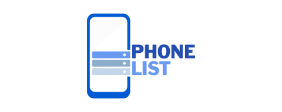In 2025, retargeting remains one of the most effective ways to increase conversions, improve ROI, and maintain customer engagement. Retargeting, which involves targeting individuals who have previously interacted with your business, is a powerful digital marketing strategy. Whether someone visited your website, clicked on an ad, or engaged with your email campaign, retargeting ensures you can continue engaging those potential customers country wise email marketing list at key moments in their journey. With advanced tools, AI-driven analytics, and evolving customer behavior, mastering retargeting contact lists has never been more crucial. In this blog post, we’ll walk you through how to effectively retarget your contact lists, optimize your campaigns, and ultimately boost your sales and conversion rates in 2025.
Why Retargeting Contact Lists is Important in 2025
Retargeting is important because it allows you to focus on users who have already shown interest in your product or service. Unlike broad targeting, where you aim to reach new prospects, retargeting focuses on those who are already familiar with your brand. This means your marketing efforts are more efficient and cost-effective. In 2025, retargeting strategies are becoming even more powerful with advancements in data collection and analytics. By tracking and analyzing user behavior, you can create hyper-personalized campaigns that resonate with individual customers. Moreover, as competition in the digital space grows, retargeting allows you to stay top of mind and nurture leads through their decision-making process. It also helps maintain customer engagement by delivering relevant offers and messaging based on prior interactions.
How to Build and Segment Your Retargeting Contact Lists
Building a retargeting contact list starts with capturing valuable user data. You can collect contact information through various touchpoints, such as your website, email campaigns, social media platforms, and even online ads. Once you have this data, it’s crucial to segment it for more effective targeting. By categorizing your contacts based on behavior—such as users who abandoned their cart, downloaded content, or interacted with specific product pages—you can tailor your messaging to match their interests and actions. Segmentation also enables you to personalize your ads and content, increasing the likelihood of conversion. Tools like Google Analytics, Facebook Pixel, and marketing automation platforms help track user activity, making segmentation easier and more accurate. Remember, the more specific your segments, the more relevant and impactful your retargeting efforts will be.
Optimizing Retargeting Ads for Maximum Impact
Once your contact list is segmented, the next step is to craft compelling retargeting ads. Optimizing these ads is key to ensuring they capture the attention of your audience. In 2025, AI and machine learning technologies are helping marketers create dynamic and personalized ads that adapt based on user behavior. For example, if a user abandoned a cart on your website, you can show them ads featuring the exact products they left behind, along with how to host events for lead generation a time-sensitive discount or offer. Additionally, consider using a multi-platform approach for your retargeting campaigns. Retarget users across different channels like social media, search engines, and display networks to increase visibility and remind them of your brand. Testing various ad formats—such as static images, videos, and carousel ads—can also help you determine which resonates best with your audience.
The Role of Email in Retargeting Campaigns
Email remains one of the most effective tools for retargeting in 2025. After a user engages with your brand—whether by subscribing to your newsletter or completing a purchase—you can create automated email sequences designed to re-engage them. These emails should be personalized, relevant, and action-oriented. For instance, if a customer has abandoned their cart, you can send a reminder email with a discount or an exclusive offer to encourage them to complete their purchase. Email retargeting can also be used for cross-selling and upselling, which are highly effective for increasing customer lifetime value. Integrating email marketing with your overall retargeting strategy ensures a seamless and consistent experience for your audience, making it more likely that they’ll return and convert.
Conclusion: Stay Ahead with Retargeting in 2025
In conclusion, mastering retargeting contact lists in 2025 requires a combination of strategic planning, segmentation, personalized messaging, and the use of advanced technologies. By leveraging AI and machine learning, marketers can create more targeted and effective retargeting campaigns that lead to higher conversion rates and better customer retention. Additionally, the integration of multiple platforms, including email, social media, and paid ads, can aero leads help maximize your reach and engagement with potential customers. As consumer behavior continues to evolve, it’s crucial to stay adaptable and keep refining your retargeting strategies to ensure you remain competitive. Start building and optimizing your retargeting contact lists today, and position your business for long-term success in 2025.

